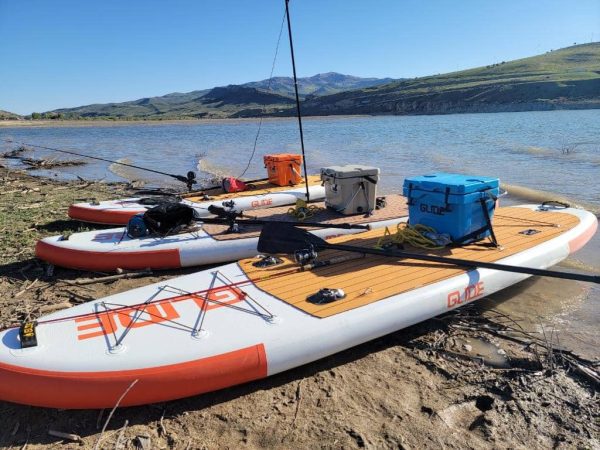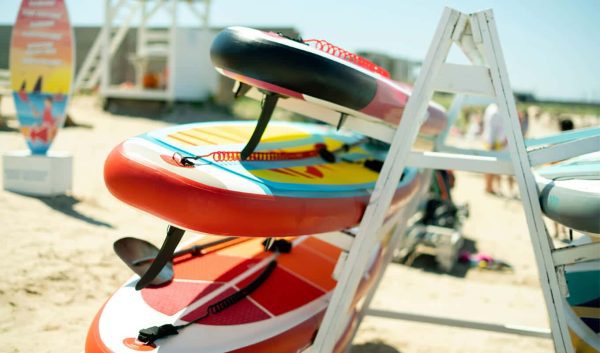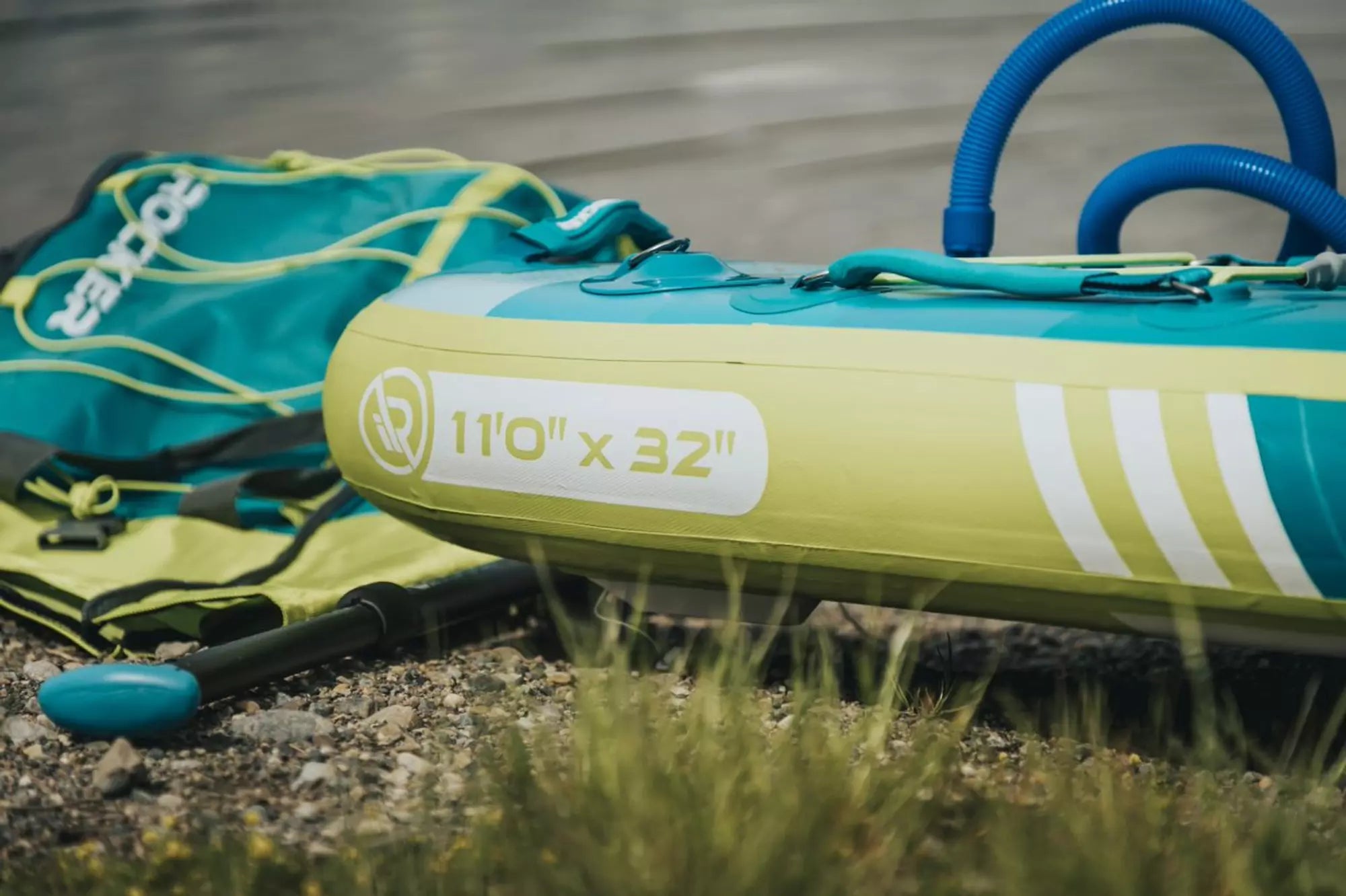As paddleboarding enthusiasts, we understand the excitement that comes with the warmer months and the opportunity to hit the water on our SUP boards. But as the off-season approaches, we find ourselves facing a new challenge: how do we properly store our beloved boards to ensure they remain in top shape for the next season? In this article, we will share some valuable tips and insights on how to store your SUP board during the off-season, keeping it happy, healthy, and ready for your next adventure on the water.
Choosing the right storage space
Indoor storage options
When it comes to storing your SUP board during the off-season, it is crucial to choose the right storage space to ensure its longevity. Indoor storage options provide better protection against harsh weather conditions and potential damage. Look for a dry, clean, and temperature-controlled area, such as a garage, basement, or dedicated storage room.
Outdoor storage options
If indoor storage is not feasible, there are outdoor storage options available. However, it is essential to take extra precautions to protect your SUP board from the elements. Consider using a waterproof cover or tarp to shield it from rain, snow, and UV rays. Ensure that the storage area is well-secured, away from busy areas, and protected from potential theft.
Cleaning and drying your SUP board
Removing dirt and debris
Before storing your SUP board, it is essential to remove any dirt, sand, or debris that may have accumulated during your adventures. Use a soft brush or cloth to gently scrub the surfaces, paying extra attention to the areas around the fin boxes and leash plugs. This will help prevent dirt from scratching or damaging the board during storage.
Rinsing with fresh water
After removing the dirt and debris, rinse your SUP board with fresh water to remove any salt or other contaminants that may have accumulated. If possible, use a hose or take it to a nearby lake or beach for a thorough rinse. This step is especially important if you’ve been using your board in saltwater, as salt can be corrosive if left on the board for an extended period.
Thoroughly drying your board
Once you have rinsed your SUP board, it is crucial to ensure that it is thoroughly dry before storing it. Leaving any moisture on the board can lead to mold, mildew, or warping over time. Wipe down the board with a dry cloth or allow it to air dry completely in a well-ventilated area. Remember to dry both the top and bottom surfaces, as well as any accessories or attachments.
Applying a protective layer
To provide an additional layer of protection during storage, consider applying a protective wax or sealant to your SUP board. This will help prevent dirt, moisture, and UV rays from damaging the board. Follow the manufacturer’s instructions for applying the wax or sealant, and ensure that it is completely dry before storing the board.
This image is property of cdn.shopify.com.
Removing and storing fins
How to remove fins
If your SUP board has removable fins, it is recommended to remove them before storing the board. Start by loosening the fin screws or levers, depending on the type of fin system your board has. Carefully lift the fins out of their slots, being mindful not to force or damage them. Once the fins are removed, clean them thoroughly to remove any dirt or debris.
Cleaning and storing fins
After removing the fins, clean them with fresh water and a soft brush to ensure they are free from any dirt or salt residue. Once they are clean and dry, store them in a protective bag or wrap them in a soft cloth to prevent any scratches or damage. It is always a good idea to label the fins for easy identification when it’s time to reattach them to your SUP board.
Deflating and rolling up your SUP board
Properly deflating your board
For inflatable SUP boards, it is crucial to deflate them properly before storing. Begin by removing the valve cap and pressing down on the valve to release the air. Use a pump or your hands to gently squeeze out any remaining air, making sure to remove as much as possible. Properly deflating the board will make it easier to roll up and save space during storage.
Rolling up your board
Once your inflatable SUP board is deflated, it is time to roll it up. Start by folding in the sides of the board towards the center, ensuring that all excess air is expelled. Then, starting from the end opposite the valve, carefully roll up the board tightly. Be gentle to avoid any unnecessary strain or damage to the board.
Securing the rolled-up board
To keep your rolled-up SUP board secure and prevent it from unrolling, use the provided straps or bungee cords. Wrap them tightly around the rolled-up board, making sure not to compress it too tightly. It is important to strike a balance between secure fastening and maintaining the board’s shape. Double-check that the straps or cords are secure before moving on to the next step.
This image is property of cdn.shopify.com.
Using a board bag or cover
Benefits of using a board bag or cover
Using a board bag or cover is an excellent way to provide an additional layer of protection to your SUP board during storage. These accessories help guard against dust, dirt, scratches, and UV rays, keeping your board in top condition. Board bags or covers also make transportation easier and provide a convenient way to carry and store your SUP board.
Choosing the right size
When selecting a board bag or cover, it is crucial to choose the right size to ensure the best fit and protection for your SUP board. Measure your board’s length, width, and thickness accurately and choose a bag or cover that closely matches those dimensions. A proper fit will ensure that the board is well-protected and minimize any unnecessary movement or shifting during storage.
Packing your board with care
When placing your SUP board in a board bag or cover, take care to position it correctly. Ensure that the board is clean and dry before insertion to prevent any moisture or dirt from trapping inside. Carefully slide the board into the bag, ensuring that it is centered and properly aligned. Close the bag or cover securely, taking care not to leave any parts of the board exposed.
Storing paddle and accessories
Cleaning and drying your paddle
Before storing your SUP paddle, it is important to clean and dry it thoroughly. Rinse the paddle with fresh water to remove any dirt or salt residue. Pay attention to the blade and handle, as these are the areas most likely to accumulate debris. Wipe the paddle dry with a soft cloth, ensuring that it is completely dry before storage to prevent any moisture-related damage.
Disassembling and storing paddle
If your SUP paddle can be conveniently disassembled, it is recommended to do so for storage. Remove the paddle handle from the shaft according to the manufacturer’s instructions. This will help save space and make storage more efficient. Wrap each paddle component in a soft cloth or use a dedicated paddle bag to prevent scratches and ensure protection during storage.
Storing other accessories
Apart from the paddle, it is important to consider the storage of other SUP accessories you may have, such as a leash, life jacket, or repair kit. Clean and dry these items thoroughly before storing them. Keep them together in a designated storage container or bag to ensure they are easily accessible when you are ready to use your SUP board again.
This image is property of paddlenorth.com.
Preventing damage in storage
Avoiding extreme temperature fluctuations
Extreme temperature fluctuations can cause significant damage to your SUP board during storage. Avoid storing your board in areas prone to extreme heat or cold, such as attics or unheated sheds. Rapid and extreme temperature changes can cause warping, delamination, or cracking. Choose a storage space with stable temperatures to ensure your board’s integrity.
Protecting from sunlight and UV rays
Prolonged exposure to direct sunlight and UV rays can cause discoloration, fading, and potential damage to your SUP board. When storing your board, ensure that it is shielded from direct sunlight or cover it with a protective cloth or board bag. If outdoor storage is the only option, consider using a high-quality cover or tarp specifically designed to block UV rays.
Keeping away from sharp objects
To prevent accidental damage, it is crucial to keep your SUP board away from sharp objects during storage. This includes tools, gardening equipment, or any other items that may accidentally come into contact with the board. Store your board in a designated area, away from potential hazards, to minimize the risk of punctures, scratches, or other types of damage.
Preventing pests and rodents
Pests and rodents can wreak havoc on your stored SUP board. To deter unwanted critters, choose a storage space that is sealed and inaccessible to insects and rodents. Consider using pest deterrents such as mothballs or traps. Additionally, regularly inspect your storage area for signs of infestation and take appropriate measures to remove pests as soon as possible.
Regular maintenance during the off-season
Checking for damage
While your SUP board is in storage, it is essential to regularly inspect it for any signs of damage. Look for cracks, dents, or delamination on the board’s surface, paying extra attention to high-stress areas such as the edges and fin boxes. Catching any damage early will allow you to address it promptly and potentially avoid more significant problems.
Inspecting fin boxes and leash plugs
Inspecting the fin boxes and leash plugs is crucial for ensuring the proper function and attachment of these components. Check for any signs of looseness, cracking, or damage. Tighten any loose screws or connectors if necessary. Keeping these parts in good condition will ensure that your SUP board is ready for use when the off-season ends.
Applying lubrication to moving parts
To keep your SUP board’s moving parts in optimal condition during storage, it is recommended to apply lubrication to screws, levers, or any other adjustable components. This will prevent rust, corrosion, or seizing, making it easier to adjust or remove these parts when needed. Consult your board’s manufacturer for appropriate lubrication options and application instructions.
Replacing worn-out parts
During regular maintenance, if you notice any worn-out or damaged parts on your SUP board, it is crucial to replace them before the next season. This includes worn-out fin screws, damaged handles, or frayed leash cords. Replacing these parts promptly will ensure that your board is safe, functional, and ready for your next paddleboarding adventures.
This image is property of irockersup.com.
Monitoring the storage area
Checking for leaks or moisture
Regularly check your storage area for any signs of leaks or moisture buildup. This is especially important if you are storing your SUP board in an outdoor location. Look for any water stains, condensation, or puddles near or around the board. If you notice any signs of water intrusion, identify and address the source promptly to prevent potential damage to your board.
Monitoring temperature and humidity levels
Monitoring temperature and humidity levels in your storage area will help ensure a stable environment for your SUP board. Extreme temperature or humidity fluctuations can lead to warping, delamination, or other types of damage. Use a temperature and humidity monitor or a hygrometer to keep track of these levels and make necessary adjustments if needed.
Ensuring proper ventilation
Proper ventilation is essential to prevent mold, mildew, or musty odors in your storage area. Ensure that there is adequate airflow by opening windows, using fans, or installing vents if necessary. Good ventilation will help keep your SUP board and other stored items in a dry and well-ventilated environment, reducing the risk of moisture-related damage.
Preparing for re-use
Cleaning and inspecting your SUP board
Before getting back on the water, it is important to clean and inspect your SUP board after the off-season. Once again, remove any dirt, debris, or accumulated moisture. Inspect the board for any signs of damage, paying particular attention to the areas around the fin boxes and leash plugs. Address any necessary repairs and ensure that your board is in good condition for your next adventure.
Testing air leakage on inflatable boards
If you have an inflatable SUP board, it is crucial to test for air leakage before heading out on the water. Inflate the board and closely monitor it for any signs of air leakage. Pay attention to the valves, seams, and any potential puncture areas. If you notice any loss of air pressure, identify and repair the leak before using the board.
Reinstalling fins and accessories
Once you have ensured that your SUP board is clean, dry, and in excellent condition, it is time to reinstall the fins and other accessories. Follow the manufacturer’s instructions to properly attach the fins, ensuring a secure and stable fit. If you have disassembled your paddle, reassemble it according to the manufacturer’s guidelines. Double-check that all accessories are properly attached and secure.
Reassembling and testing the paddle
After reassembling your paddle, it is a good idea to give it a quick test before hitting the water. Ensure that all connections are tight and secure, and that the paddle blades are properly aligned. Perform a few strokes in the air or in a safe and controlled environment to ensure that the paddle is functioning correctly. This will help you feel more confident and prepared for your next paddling session.
In conclusion, storing your SUP board properly during the off-season is crucial for maintaining its longevity and performance. By following the steps outlined in this comprehensive guide, you can ensure that your board remains in excellent condition and ready for your next paddleboarding adventures. Remember to choose the right storage space, clean and dry your board thoroughly, store accessories separately, and regularly inspect and maintain your board during the off-season. Happy paddling!
This image is property of images.surferseo.art.









































